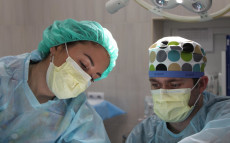- pathfindersAI
- Job Profile
Midwives
Summary
Exploring the Midwifery Profession: A Comprehensive Guide
What They Do
Midwives play a vital role in the healthcare ecosystem, offering invaluable services to expectant mothers during one of the most critical phases of their lives. Midwifery revolves around providing care before, during, and after pregnancy, ensuring a holistic approach to maternal and neonatal health. Midwives assess the physical and emotional needs of the mother, monitor fetal development, and provide guidance on childbirth and early parenthood. In essence, midwives are not just healthcare providers but also educators, advocates, and confidants.
Job Responsibilities
The responsibilities of a midwife are diverse and expansive. For starters, midwives conduct initial assessments of pregnant women to gauge their health status and chart a tailored care plan. They organize and facilitate prenatal classes, covering everything from nutrition to the birthing process. As labor approaches, midwives offer continuous support, both emotionally and medically, to ensure safe deliveries. Postnatally, they assist with newborn care and lactation education, making home visits to ensure both mother and baby are thriving. Record keeping is also a critical task, as maintaining accurate medical records is essential for ongoing patient care.
Essential Skills
To excel in midwifery, one must possess a blend of medical expertise and interpersonal skills. Medical knowledge is paramount; thus, proficiency in recognizing pregnancy complications, administering medications, and performing emergency procedures is essential. Equally important are the softer skills: empathy, excellent communication, and problem-solving abilities. A midwife must build trust with their clients, which requires active listening, compassion, and the capacity to explain complex medical concepts in an accessible manner. Additionally, being able to work well under pressure and demonstrate flexibility is crucial, given the unpredictable nature of childbirth.
Educational Pathways
The journey to becoming a midwife necessitates a structured educational pathway. Typically, aspirants begin with a bachelor's degree in nursing or a closely related field. Following this, specialization in midwifery is achieved through programs accredited by bodies such as the American Midwifery Certification Board (AMCB). These programs often blend rigorous classroom instruction with hands-on clinical experience. Upon completion, candidates must pass a national certification exam to practice legally. Continuing education is also encouraged, as it keeps midwives up-to-date with the latest advancements in maternal and neonatal care.
Career Prospects
The career prospects for midwives are favorable, with an increasing awareness of and preference for personalized maternal care boosting demand for their services. Midwives can find employment in various settings, including hospitals, birthing centers, private practices, and even through independent consultancy. According to the U.S. Bureau of Labor Statistics, the job outlook for midwives is expected to grow significantly over the next decade, fueled by a growing emphasis on holistic and cost-effective prenatal care. Furthermore, the role offers professional fulfillment, making it an attractive career choice for those passionate about maternal health.
Conclusion
In conclusion, midwifery is a rewarding and multifaceted profession dedicated to ensuring the well-being of mothers and newborns. From prenatal care to postnatal support, midwives deliver comprehensive healthcare services underpinned by a unique blend of medical acumen and empathetic communication. The pathway to this career is challenging yet structured, involving rigorous education and certification. The future for midwives is promising, bolstered by a growing recognition of their crucial role in maternal healthcare delivery. For individuals passionate about making a positive impact during the monumental journey of childbirth, a career in midwifery offers an unparalleled avenue for both personal and professional fulfillment.
Video
Compensation
| State | Median Salary | Median Hourly | Positions |
|---|---|---|---|
| AL | 45,560 | 21.91 | 100 |
| AK | 100,060 | 48.11 | 140 |
| AZ | 61,010 | 29.33 | 720 |
| AR | 37,120 | 17.85 | 540 |
| CA | 68,260 | 32.82 | 4,070 |
| CO | * | * | 260 |
| CT | 48,750 | 23.44 | 680 |
| DE | 78,410 | 37.70 | 40 |
| DC | 103,490 | 49.75 | 120 |
| GA | 55,770 | 26.81 | 1,740 |
| HI | 56,720 | 27.27 | 470 |
| ID | 45,100 | 21.69 | 200 |
| IL | 57,350 | 27.57 | 600 |
| IN | 63,810 | 30.68 | 610 |
| IA | 88,430 | 42.51 | 80 |
| KS | 45,980 | 22.11 | 440 |
| KY | 82,450 | 39.64 | 150 |
| LA | 63,630 | 30.59 | 4,100 |
| MD | 71,090 | 34.18 | 2,950 |
| MA | 72,290 | 34.76 | 380 |
| MI | 75,350 | 36.22 | 880 |
| MN | 76,560 | 36.81 | 670 |
| MS | 33,820 | 16.26 | 160 |
| MO | 64,760 | 31.13 | 440 |
| MT | 60,560 | 29.12 | 90 |
| NE | 50,050 | 24.06 | 220 |
| NV | 48,590 | 23.36 | 1,280 |
| NH | 82,630 | 39.73 | 280 |
| NJ | 87,180 | 41.92 | 970 |
| NM | 62,070 | 29.84 | 200 |
| NY | 62,400 | 30.00 | 1,590 |
| NC | 58,660 | 28.20 | 510 |
| ND | 83,290 | 40.04 | 50 |
| OH | 44,510 | 21.40 | 1,270 |
| OK | 66,000 | 31.73 | 90 |
| OR | 68,350 | 32.86 | 290 |
| PA | 44,820 | 21.55 | 730 |
| RI | 48,990 | 23.55 | 440 |
| SC | 63,190 | 30.38 | 350 |
| SD | 40,870 | 19.65 | 40 |
| TN | 60,580 | 29.13 | 1,480 |
| TX | 64,730 | 31.12 | 1,040 |
| UT | 56,940 | 27.38 | 240 |
| VT | 55,540 | 26.70 | 110 |
| VA | 73,870 | 35.51 | 700 |
| WA | 66,800 | 32.12 | 730 |
| WV | 49,450 | 23.78 | 110 |
| WI | 75,740 | 36.41 | 580 |
| WY | 87,500 | 42.07 | 70 |
Similar Occupations
In this area you will find other occupations that are close to the one you were viewing in tasks, knowledge and work environment. If the primary job profile you are viewing isn't quite to your liking, take a look around and see what else is available.
Basic and Premium Accounts have more alternative occupations available than the Free account.

Acute Care Nurses - 29-1141.01
Acute Care Nurses provide immediate and intensive care to patients with severe, life-threatening conditions, often working in environments such as emergency rooms, intensive care units, and surgical wards. They monitor vital signs, administer medications, and collaborate with multidisciplinary teams to ensure rapid and effective treatment.
-
$86,070/yr
Median Pay -
3,175,390
Number of Jobs

Critical Care Nurses - 29-1141.03
Critical Care Nurses provide meticulous, round-the-clock care to patients in intensive care units who are experiencing life-threatening conditions, ensuring the delivery of advanced medical treatments and the vigilant monitoring of vital signs. They collaborate closely with a team of healthcare professionals to manage complex medical equipment, administer medications, and respond swiftly to medical emergencies to stabilize critically ill patients.
-
$86,070/yr
Median Pay -
3,175,390
Number of Jobs